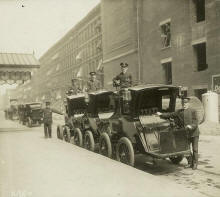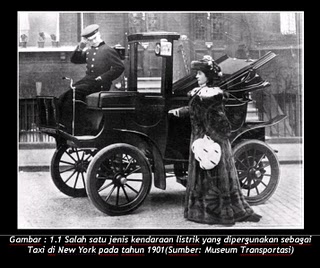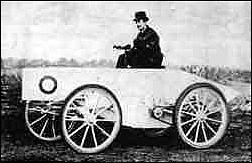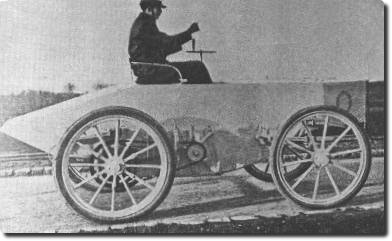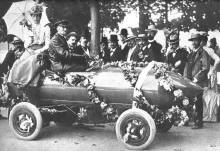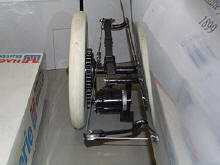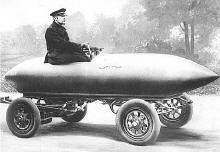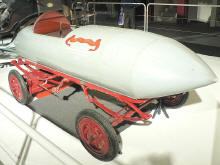History of Electric Vehicles Part III
|
On August 1, 1881 French inventor Gustave Trouve made his benchmark report to the French Academy of Sciences, stating: “I had the honour to submit to this Academy, in the session of 7th July 1880, a new electric motor based on the eccentricity of the Siemens coil flange. By suggestive studies, which have allowed me to reduce the weight of all the components of the motor, I have succeeded in obtaining an output which to me appears quite remarkable."
Trouve could not only lay claim to the world’s first marine outboard engine but, in taking the same motor and adapting it as the drive mechanism of a Coventry-Rotary pedal tricycle or velocipede, Trouve also pioneered the world’s first electric vehicle. In November 1881, Gustave Trouvé demonstrated a working three-wheeled automobile at the International Exhibition of Electricity in Paris.
In 1881 Charles Jeantaud, Parisian engineer and carriage builder, with help from Camille Faure (inventor of the pasted plate battery), built an electric vehicle in France. The car was made from a Tilbury style buggy with a Gramme motor and the Fulmen battery (Faure's patent). Also in 1881, Englishmen William Ayrton & John Perry of England built an electric tricycle with two large wheels at the rear, with the right one driven, and a small wheel up front (the first electric wheelchair), with electric lights. The electric tricycle used ten of Planté's lead acid cells in series, providing 1/2 horsepower. The speed was changed by switching the lead acid batteries on and off one after another. The trike was capable of a range between 10 and 25 miles and a maximum speed of 9 mph, depending on terrain. Ayrton and Perry's tricycle was the very first vehicle to have electric lighting.
In 1888 Elwell-Parker Ltd. agreed to consolidated with other companies to form the Electric Construction Corporation which incorporated in 1889. The company produced almost every conceivable piece of electrical equipment including alternators, dynamos, motors, accumulators, transformers, electrical switchboards, high voltage switches, voltmeter switches, arc lamps, and gas tight motors for electric pumps and electric cranes. Elwell-Parker established a US branch, the Elwell-Parker Electric Co., in Cleveland, Ohio. The US branch was established in 1892 at 4224 St. Clair Ave. and was managed by M.S. Towson. Elwell-Parker manufactured electric locomotives and omnibuses in England and introduced their first "electric dog cart" in 1896.
College Dropout Builds Electric Trike in Parent’s BasementIn 1884 Andrew L. Riker dropped out of school after the first year of
college and started experimenting
with electric motors and a
1888: Philip W. Pratt demonstrates the very first American electric tricycle.
Company. The vehicle’s 10 lead-acid cells created 20
volts to a 0.5 horsepower DC motor. The driver sat above the battery
assemblage. The whole setup weighed about 300 pounds and had a top speed
of eight miles-per-hour.
Mr. Pratt may indeed deserve the title of "father of
the American electric automobile." His invention might well have gone
unnoticed but for the journalistic professionalism of the editor of a
short-lived Boston magazine devoted to the wonders of electricity,
Modern Light and Heat. Writing in
the issue of August 2, 1888, the editor noted, "We received an invitation
last Friday from a gentleman who is giving much attention to electric
vehicles--Mr. P.W. Pratt of Boston--to take a ride on an electric tricycle
that had just been completed for him by a well-know electrical
manufacturing concern of this city." 1888 – Immisch & Company built a four-passenger carriage, powered by a one- horsepower motor and 24-cell battery, for the Sultan of the Ottoman Empire. In the same year, Magnus Volk in Brighton, England made a three-wheeled electric car. William Morrison of Des Moines, Iowa built the first
successful electric automobile in the United States in 1891.
1893 The "World's Colombian Exposition" opened in Chicago introducing the age of electricity to millions. Morrison's car was there and impressed Albert Pope, and most of the other people who made early cars, leading to the proliferation of electric cars in the late 1890's and early 1900's.
1894 The Electrobat was the first successful electric automobile. It was designed and built by mechanical engineer Henry G. Morris and chemist Pedro G. Salom in Philadelphia, Pennsylvania. Both had backgrounds in battery streetcars and, as the battery streetcar business was fading, they teamed up to make battery road vehicles. Their effort was patented on August 31, 1894. Built like a small version of a battery streetcar, it was a slow (it ran at 15 mph), heavy, impractical vehicle with steel tires to support the immense weight of its large lead battery. It entered production in 1895. Later they redesigned the Electrobat (with some help from Walter Baker's axles and bearings) first as a racecar then as an electric hansom cab. In 1896, building off the
Electrobat,
Morris and Salom construct their two-seater
Louis Antoine Krieger (1868-1951) started making electric horseless carriages in Paris in 1894. The Krieger electric landaulet had a drive motor in each front wheel with a second set of parallel windings (bifilar coil) for regenerative braking. Regenerative braking is used to recoup some of the energy lost during stopping. This energy is saved in a storage battery and used later to power the motor. Some vehicles driven by electric motors use the motor as a generator during braking and its output is supplied to an electrical load; the transfer of energy to the load provides the braking effect.
American Electric Vehicle Co. Chicago IL. incorporated early 1896 by
an MIT grad in electrical & mechanical engineering Clinton Edgar Woods,
with capitol stock of $250,000. They company had a car on the streets by May. The
car featured Baker designed ball bearing axels, solid rubber tires, and
twin motor chain drive at the rear wheels. By 1899 C. E. Woods was
involved in a new company under his own name called the
Woods Motor Vehicle Company. American became
Waverley. Hiram Percy Maxim was hired (1895) by
Hayden Eames
The Belgian gun maker Pieper started making electric cars in 1889; in 1896 the son Henri made the "Auto-Mixte" a parallel hybrid with one mode at a time. 1897 – The London Electric Cab Company began regular service using cars designed by Walter Bersey. The Bersey Cab, which used a 40-cell battery and 3 horsepower electric motor, could be driven 50 miles between charges. The first electric taxis hit the streets of New York City in 1897. Before the 1920s, electric automobiles were competing with petroleum-fueled cars for urban use of a quality service car. In 1897, electric vehicles found their first commercial application in the U.S. as a fleet of electrical New York City taxis, built by the Electric Carriage and Wagon Company of Philadelphia. (Electric Vehicle Company)
1897 Elwell-Parker started marketing series wound, low (36-72) voltage (industrial motors ran at 110/220 volts, traction motors for streetcars ran at 200-600 volts), high amperage, direct current motors for battery-powered transportation. Designed by M. S. Towson at the suggestion of Theodore Willard (of Willard Battery). Clients included Babcock, Baker, Columbia, Johnson-Hewitt, Strong & Rogers, Waverly, and Woods. 1898 – The German Dr. Ferdinand Porsche, at age 23, built his first car, the Lohner Electric Chaise. With a hub-motor at each driving wheel it was the world’s first front-wheel-drive. Porsche’s second car was a hybrid, using an internal combustion engine to spin a generator that provided power to electric motors located in the wheel hubs. On battery alone, the car could travel nearly 40 miles. The first speed record ever recorded for an automobile was done on December 18, 1898 in an electric vehicle. On that day Count Gaston de Chasseloup-Laubat of Paris, France, became the fastest man alive. The Count had driven his speed demon electric vehicle Jeantaud to speeds never known before or experienced by any human. This speed was a phenomenal 39 miles for per hour.
This
auspicious event earned Count Gaston the nickname "the Electric Count."
On December 18th, 1898 Count Gaston de Chasseloup-Laubat (the "Electric
Count") set the world's first official land-speed record near Paris. The
new record was set in his electric Jeantaud automobile at a hair-raising
speed of 39.245mph (62.8 kph). The car employed a single electric motor
and was powered by Fulman alkaline batteries.
As word spread about this tremendous achievement, the Belgian Camille Jenatzy traveled to Paris to challenge the Count to a dual of sorts. In the Counts presence, on January 17, 1899, Camille Jenatzy took a CGA Dogcart powered by one 80 cell Fulmen lead acid battery to 41.420 miles an hour. The Electric Count, prompted by the challenge, immediately took out the Jeantaud and drove it to an unparalleled speed of 43.6 miles an hour the same day. Both challengers, having spent their batteries, separated themselves from the field of battle. Not to be out done, Camille Jenatzy returned ten days later on January 27th and took his vehicle to 49.92 miles an hour. Annoyed by the persistent Belgian, the Count tweaked his vehicle and came out on March 4, with a renewed conviction to go faster. He did going 57.6 miles an hour. After reaching that speed I am sure he thought that the man in the Dogcart would never return to try to go faster than that. Camille Jenatzy was not satisfied with the results and vowed to return. Camille Jenatzy and the rocket-shaped Jamais Contente He returned on April 29th with his now famous artillery shaped "Jamais Contente" vehicle, modified with not one but two 80 cell Fulmen lead acid batteries. This time Jeatzy was going for a TKO. He drove the "Jamais Contente," which in English means Never Satisfied, to a record speed of 65.79 miles per hour. Nothing known at the time, neither man nor beast, had ever traveled as fast. The Electric Count simply could not match the challenge and the record stood until the insane imaginings of a sewing machine manufacturer decided he could go faster. Also in 1899 Walter Baker established the Baker Motor Vehicle Company and began manufacturing Brass Era electric automobiles in Cleveland, Ohio. Baker is credited with many contributions to automotive design, which include the first shaft drive, first use of alloy steel, first "full floating" ball bearing rear axle, first horseless delivery wagon, and the first use of aerodynamic streamlining.
Some information extracted
from Wikipedia, the free encyclopedia: Text is available under the
Creative Commons Attribution-ShareAlike License; additional terms
may apply. See
Terms of Use
for details.Significant material contributed by Galen Handy |
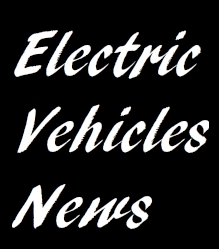
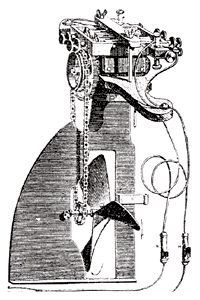
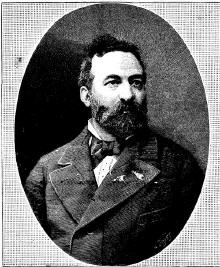
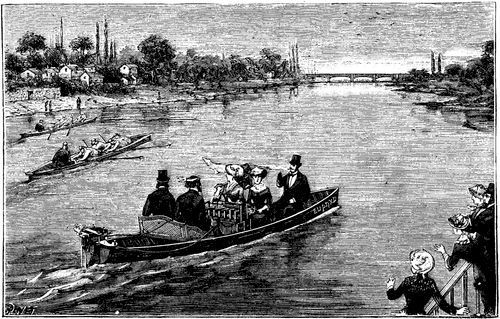
_small.jpg)
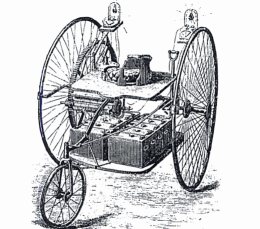
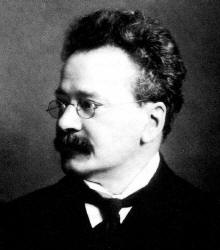
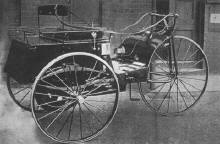
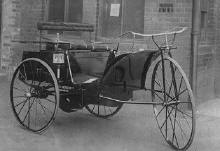
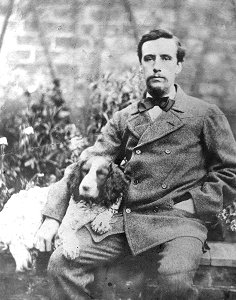
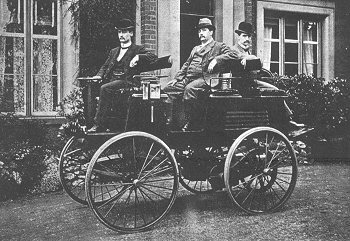
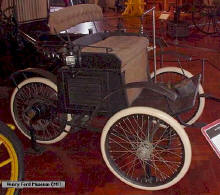
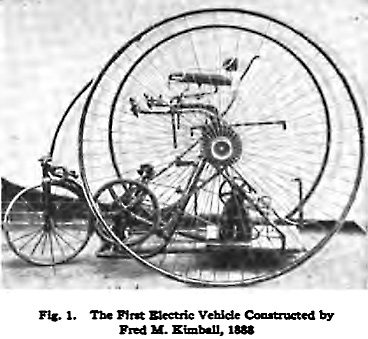
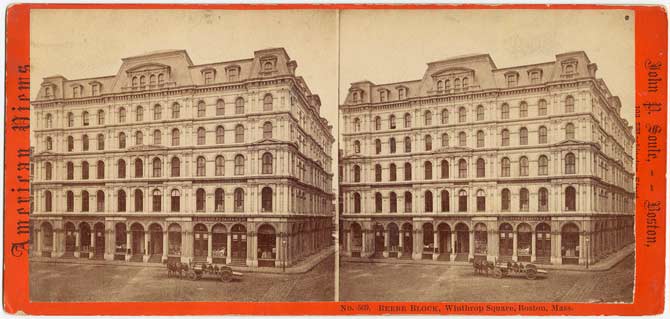
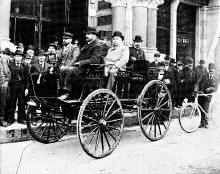
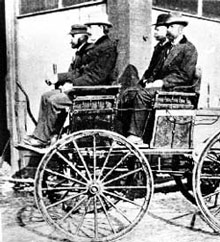
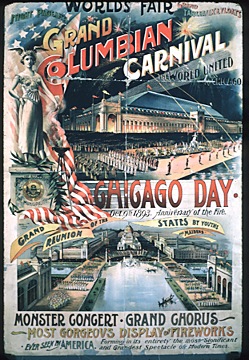


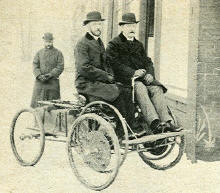
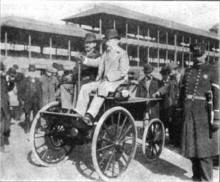
 Electric
Road Wagon and formed the Electric Carriage and Wagon Company, evidently the first electric car company in America. The Electric
Road Wagon was developed into a series of coupes and hansoms for use as
taxis in New York. These vehicles had rear-wheel steering, two 1/2 hp motors, and 44 lead-acid cells
which gave them a range of 30 miles. Their company was purchased by Isaac L. Rice
of Electric Storage Battery. Along with Pope (Columbia) and Riker,
these companies combined and were the foundation for the
Electric
Road Wagon and formed the Electric Carriage and Wagon Company, evidently the first electric car company in America. The Electric
Road Wagon was developed into a series of coupes and hansoms for use as
taxis in New York. These vehicles had rear-wheel steering, two 1/2 hp motors, and 44 lead-acid cells
which gave them a range of 30 miles. Their company was purchased by Isaac L. Rice
of Electric Storage Battery. Along with Pope (Columbia) and Riker,
these companies combined and were the foundation for the
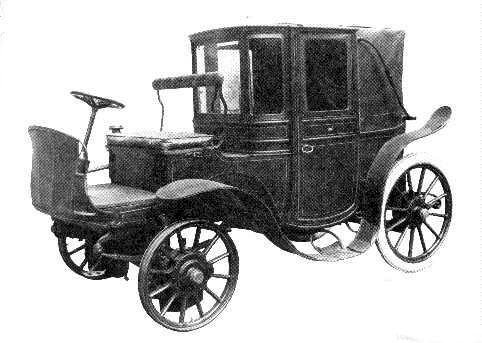
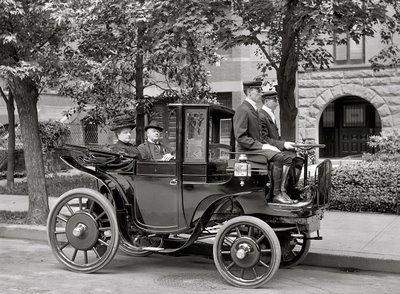
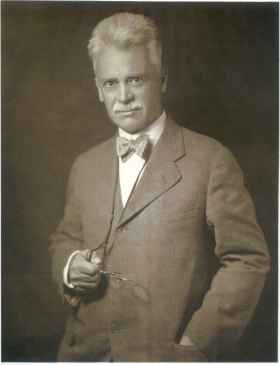 to design the Columbia Electric Buggy for the Pope
Manufacturing Co, the dominant maker of bicycles. The first car Maxim
built was a gasoline tricycle, but Albert A. Pope was not impressed. Pope
told Maxim, "You'll never get people to sit over an explosion". In April 1896
they introduced the first practical commercially available electric car.
Built with bicycle technologies of steel tube, ball bearings, and wire
wheels. The car was the first to use the Maxim designed worm and sector
steering gear. Top speed was about 12 mph, the weakness then as always was
the battery. Maxim believed that the internal combustion engine was the
future. (Incidentally, Maxim was the man responsible for transferring
automobile controls from the right-hand side of cars to the left-hand).
Pope favored electrics. By the turn of the century (as the
to design the Columbia Electric Buggy for the Pope
Manufacturing Co, the dominant maker of bicycles. The first car Maxim
built was a gasoline tricycle, but Albert A. Pope was not impressed. Pope
told Maxim, "You'll never get people to sit over an explosion". In April 1896
they introduced the first practical commercially available electric car.
Built with bicycle technologies of steel tube, ball bearings, and wire
wheels. The car was the first to use the Maxim designed worm and sector
steering gear. Top speed was about 12 mph, the weakness then as always was
the battery. Maxim believed that the internal combustion engine was the
future. (Incidentally, Maxim was the man responsible for transferring
automobile controls from the right-hand side of cars to the left-hand).
Pope favored electrics. By the turn of the century (as the
